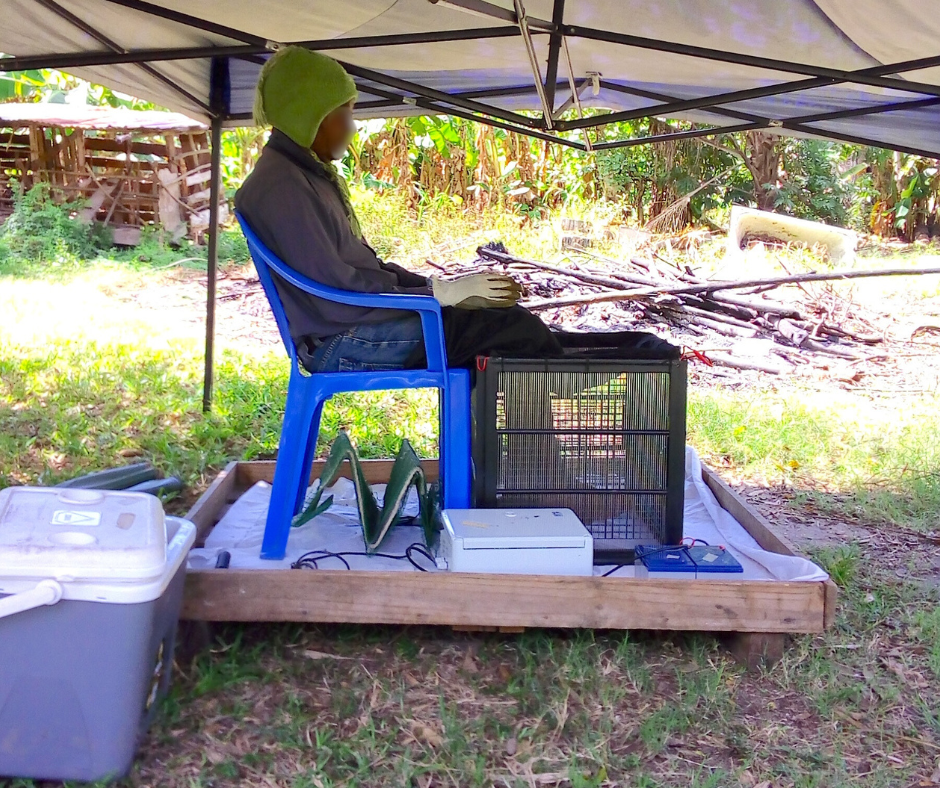
MALARIA CONTROL: New device shows promise in combating mosquitoes in urban settings

Mosquito-borne diseases remain a significant global health challenge, especially in urban areas where Aedes mosquitoes, known vectors for diseases like dengue and Zika, thrive. To address this challenge, various vector control tools have been developed.
One notable tool is the transfluthrin-treated emanator, a simple treated fabric device for passively emanating the volatile pyrethroid transfluthrin. The device was recently developed in Tanzania to protect against night-biting mosquitoes, reducing human-mosquito contact and the risk of disease transmission.
Several parallel studies have been conducted in Tanzania and Haiti to evaluate the effectiveness of transfluthrin-treated devices in reducing mosquito landing rates and protecting against mosquito bites, focusing on Aedes aegypti, the primary disease carrier.
Ifakara scientists lead the study
The Tanzanian study was led by scientists from the Ifakara Health Institute including Nicodem Govella, Alphonse Assenga, Amos Mlwale, and Gerry Killeen, and published in PLOS One journal. Similarly, Killeen played a key role in the Haiti study, collaborating with colleagues from partner institutions in the UK, Kenya, Brazil, France, and Ireland.
Evaluating effectiveness through field studies
Both studies were conducted in urban settings within Tanzania and Haiti, with parallel studies mentioned in Brazil and Peru. The scientists tested the devices through field and semi-field experiments, distributing the emanators to households and evaluating their impact on Aedes aegypti mosquito landing rates.
Despite promising initial findings, both studies revealed limited effectiveness of the transfluthrin emanators in real-world urban environments.
Findings in Tanzania, Haiti
In Tanzania, findings showed that while the emanators showed promise against night-biters, they provided limited protection against daytime-biting mosquitoes. The effectiveness varied based on transfluthrin formulation and dosage, complicated by local Aedes mosquitoes' resistance to pyrethroids as revealed by laboratory tests.
Similarly, in Haiti, findings revealed minimal impact of the emanators on mosquito behavior and biting rates despite variations in weather conditions and emanator placement. Lab tests confirmed resistance among local Aedes populations to the device's chemicals, further complicating the devices' ability to provide robust protection against mosquito bites.
“Apart from the encouraging levels of protection observed at the very outset of the initial longitudinal assessment of transfluthrin emanator efficacy, the results obtained with wild Ae. aegypti under full field conditions generally fell far short of what was hoped for, with negligible levels of protection observed across all the experiments represented,” noted the scientists.
Community perceptions vs. scientific findings
Despite the entomological findings, sociological assessments in Haitian communities revealed positive user perception and strong satisfaction with protection against mosquitoes. The disconnect between scientific efficacy and community acceptance underscores the importance of integrating sociological perspectives into mosquito control strategies to enhance community engagement and compliance.
Addressing factors preventing effectiveness
Both studies concluded that while transfluthrin emanators demonstrated some effectiveness in controlled conditions, their performance in real-world urban environments inhibited mosquito resistance and variability in efficacy across formulations and settings.
The scientists suggested that further investigation is needed to identify the potential of transfluthrin emanators for protecting against Aedes vectors of important human arboviruses.
Additionally, they underscored the need for integrated approaches that combine effective vector control tools with community engagement and education.
“The striking contrast between these generally discouraging results, together with those from similar entomological assessments against wild Ae. aegypti in Haiti and Brazil, and the encouraging perspectives of community end users in these two other settings, remain to be resolved.”
“Although it remains unclear how effective transfluthrin emanators may be against outdoor-biting Aedes, it is encouraging that rigorous epidemiological evidence for protection against arboviruses in Peru is also somewhat at odds with parallel entomological measurements of end-user exposure in the same context.”
Read the Tanzania study here: https://pubmed.ncbi.nlm.nih.gov/38809841/
Read the Haiti study here: https://pubmed.ncbi.nlm.nih.gov/38805442/
